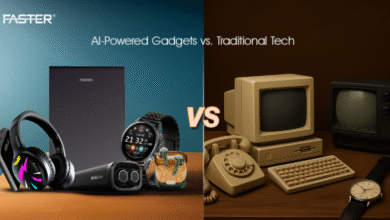How Real Customer Feedback Can Help Small Businesses Improve Their Payroll and HR Systems

Key Takeaways
- Customer feedback provides actionable insights to refine payroll and HR processes, highlighting what works well and where problems persist.
- Implementing changes based on feedback can increase operational efficiency, helping save time and money.
- Enhanced payroll and HR systems contribute to higher employee satisfaction and retention, which are crucial for the ongoing success of any small business.
Table of Contents
- Introduction
- Understanding the Value of Customer Feedback
- Identifying Common Pain Points
- Implementing Feedback-Driven Changes
- Leveraging Technology for Improvement
- Measuring the Impact of Changes
- Case Study: A Small Business Success Story
- Best Practices for Collecting and Utilizing Feedback
- Conclusion
Small businesses face an ongoing challenge to keep their daily operations running without friction in a marketplace defined by rapid change, technological advancement, and tight competition. Companies may pour resources into strategy, marketing, or expanding their customer base, but they often miss a vital resource for improvement: authentic customer feedback. Listening to honest input from clients and employees can reveal hidden challenges and create opportunities for transformation, particularly in foundational areas like payroll and HR systems. If you want to discover what people genuinely think about your business, dedicated platforms centered around customer support can deliver actionable insights and a valuable window into strengths and possible improvement areas you may have missed.
Harnessing this information does more than iron out technical glitches in your backend processes; it also helps build credibility and trust within your organization. When management chooses to act on feedback, it sends a powerful message of respect and responsiveness to employees and clients. Adopting a responsive approach to payroll and HR issues—based directly on employee and customer experiences—can lead to enhanced operational efficiency and a more motivated, loyal workforce. By translating customer feedback into legitimate changes, businesses can streamline workflows, modernize their systems to meet current expectations, and foster a positive organizational culture. All of these advantages contribute to both short-term wins and long-term growth.
Understanding the Value of Customer Feedback
Customer feedback acts as a clear mirror for small businesses, exposing what works and what doesn’t. While reviews and surveys may seem superficial initially, they provide a unique window into everyday interactions that owners and managers may overlook. In the realm of payroll and HR systems, this feedback might spotlight recurring payroll errors, inefficient onboarding routines, or communication gaps about benefits and regulatory compliance. For example, staff might alert management to confusing time tracking rules or antiquated procedures that slow productivity. Acting on these insights lets businesses make improvements that benefit all stakeholders by making processes more user-friendly, transparent, and fair. Ultimately, Company Secretarial Services engaged listening to customer perspectives is a form of ongoing quality control—for processes and people alike—helping to catch problems before they escalate and fostering a sense of shared ownership over solutions.
Identifying Common Pain Points
Small business payroll and HR operations often encounter hurdles that only become visible through honest user feedback. Some of the key challenges commonly reported in these areas include:
- Inaccurate or delayed payroll results in employee frustration and decreased morale.
- Onboarding processes are bogged down by unnecessary complexity, manual paperwork, or multiple approval steps that prolong start times for new hires.
- Poor visibility into pay, benefits, accrued leave, and deductions can cause confusion and dissatisfaction among employees who need clear answers.
Beyond these, other challenges such as a lack of transparency in overtime calculations, slow responses to employee inquiries, and difficulties updating personal information can also degrade the employee experience. Feedback helps pinpoint which pain points are most costly—either in money, time, or morale—so organizations can prioritize what matters most to their workforce and clients, choosing to fix what truly disrupts daily work rather than simply what seems obvious to management.
Implementing Feedback-Driven Changes
Once problem areas are brought to light, decisive action is crucial for meaningful progress. For example, suppose a primary concern like payroll inaccuracy is consistently cited. In that case, switching to automated wage calculation systems and digital deduction tools can dramatically reduce human error and ensure payments are consistently correct. Similarly, modernizing onboarding with digital forms, electronic signatures, and automated checklists can significantly speed up the hiring process and give new team members a smoother introduction to company culture. According to Business.com, nearly 70% of small business HR professionals found that HR software cut payroll processing time, a direct improvement enabled by listening to staff frustrations and acting on their feedback. As another example, addressing complaints about slow benefits communication by implementing automated alerts and FAQs can help employees feel informed and empowered.
Leveraging Technology for Improvement
Transforming customer feedback into ongoing improvement often requires leveraging advanced technology tools and platforms. Today’s payroll and HR solutions are designed with self-service dashboards allowing employees to access their pay stubs and benefit summaries and manage tax documents independently, drastically reducing their dependence on HR staff. Embedding quick feedback surveys into these platforms makes it simple for team members to share their experiences in real time, which keeps the communication loop open. Additionally, cloud-based solutions enable businesses to make real-time updates, automate compliance tracking, and dramatically reduce administrative overhead, strengthening security and data integrity. This shift to high-tech tools doesn’t just solve immediate problems and position small businesses for future growth and scalability by removing bottlenecks and enabling faster adaptation to new regulations or workforce needs.
Measuring the Impact of Changes
Effective change isn’t simply about making updates; it’s about evaluating the real-world impact and adjusting course when necessary. Small businesses should focus on tracking several critical performance indicators (KPIs) to ensure that their efforts lead to genuine improvement:
- Over time, the frequency and severity of payroll processing errors can directly affect employee trust and loyalty.
- Administrative hours spent on HR tasks before and after implementing new tools or procedures, as saved hours indicate process improvement.
- Trends in employee satisfaction, retention, and the number of reported issues related to payroll or HR topics.
By regularly reviewing these metrics, businesses can be confident that changes deliver tangible benefits instead of simply adding complexity. This level of monitoring provides clear benchmarks for future enhancements and helps maintain momentum for ongoing improvement.
Case Study: A Small Business Success Story
Consider a growing software startup that experienced repeated payroll hiccups due to relying on manual, spreadsheet-based systems. Missed payments and calculation mistakes led to staff unhappiness, eroded trust, and caused turnover to rise. Recognizing the seriousness of the problem, management prioritized gathering honest employee feedback via anonymous surveys, regular one-on-one check-ins, and a public suggestion box. After learning what frustrated their team, they implemented a cloud-based payroll and HR system tailored to their size and needs. They instituted monthly “pulse checks” to track morale and surface additional suggestions. Within six months, payroll errors dropped by over half, administrative time spent on corrections shrank dramatically, and employee satisfaction scores climbed by 30%. As a result, staff turnover decreased and the company retained its hard-won talent, boosting morale and day-to-day harmony, overall operational capacity, and reputation. By acting quickly on employee insights, this business improved core systems and fostered a culture of responsiveness and respect.
Best Practices for Collecting and Utilizing Feedback
1. Open Multiple Channels
Set up easy-to-access online surveys, anonymous digital forms, suggestion boxes, or informal meetings. Offering a variety of channels helps accommodate staff with different communication styles and comfort levels, ensuring more honest and diverse input.
2. Maintain Confidentiality
Employees can keep their responses anonymous, particularly for sensitive topics or critiques. This makes it safer for staff to voice genuine concerns, leading to more honest and actionable feedback.
3. Analyze and Prioritize
Don’t just collect feedback—regularly review, analyze, and categorize the data, then use it strategically to guide priorities. Focus first on the pain points that will positively impact your business and its people.
4. Communicate Results
Close the feedback loop by sharing which changes have been implemented directly from staff input. Demonstrating that feedback leads to real-world improvements builds trust and encourages ongoing participation, reinforcing a culture of continuous improvement.
Conclusion
Authentic customer and employee feedback is one of the most powerful tools for small businesses seeking to refine their payroll and HR systems. By cultivating a feedback-driven culture, deploying flexible modern solutions, and closely tracking tangible outcomes, small businesses can swiftly adapt to new challenges, foster positive employee experiences, and lay a firm foundation for lasting success in a competitive landscape.



